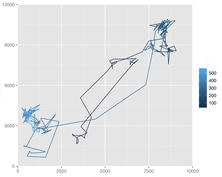Publication trimestrielle du Laboratoire
d'analyse et d'architecture des systèmes du CNRS
Wireless networking is one of the most challenging networking domains with unique features that can provide connectivity in situations where it is difficult to use wired networking, or when node mobility is required. However, the working environment usually imposes various constrains, where wireless devices face various challenges when sharing the communication media. Furthermore, the problem becomes worse when the number of nodes increase. Different solutions were introduced to cope with highly dense networks. On the other hand, a very low density can create a poor connectivity problem and may lead to have isolated nodes with no connection to the network.It is common to define network density according to the number of direct neighboring nodes within the node transmission range. However, we believe that such metric is not enough. Thus, we propose a new metric that encompasses the number of direct neighbors and the network performance. In this way, the network response, due to the increasing number of nodes, is considered when deciding the density level.Moreover, we defined two terms, self-organization and self-configuration, which are usually used interchangeably in the literature through highlighting the difference between them. We believe that having a clear definition for terminology can eliminate a lot of ambiguity and help to present the research concepts more clearly.Some applications, such as In-Flight Entertainment (IFE) systems inside the aircraft cabin, can be considered as wirelessly high dense even if relatively few nodes are present. To solve this problem, we propose a heterogeneous architecture of different technologies to overcome the inherited constrains inside the cabin. Each technology aims at solving a part of the problem. We held various experimentation and simulations to show the feasibility of the proposed architecture.Furthermore, we introduced a new self-organizing identification protocol that uses smart antennas to help the Display Units and their Remote Controls, of the IFE system, to identify each other without any preliminary configuration. The protocol was firstly designed and verified using UML language, then, a NS2 module was created to experiment with different scenarios.The experimentation and simulation results proved that such heterogeneous architecture can provide a solution for the constrained wireless communication inside the cabin.





